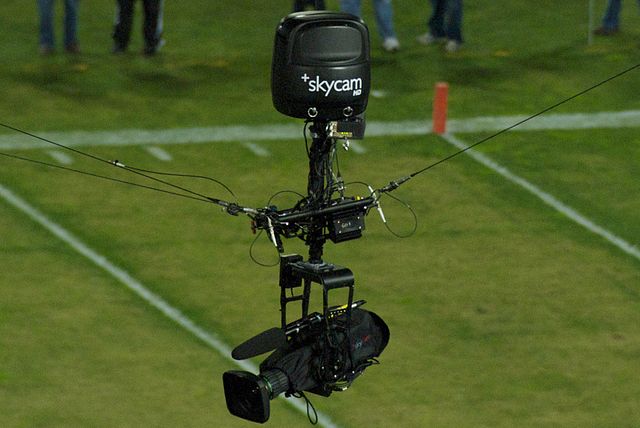Section 3.6 Examples
Example 3.6.1. Balloon.
A hot air balloon 30 feet above the ground is tethered by three cables as shown below. If the balloon is pulling upwards with a force of 900 lbs, what is the tension in each of the three cables? The grid lines on the ground plane are spaced 10 feet apart.
Strategy.
The three tensions are the unknowns which we can find by applying the three equilibrium equations.
We'll establish a coordinate system with the origin directly below the balloon and the \(y\) axis vertical, then draw and label a free-body diagram.
Next we'll use the given information to find two points on each line of action, and use them to find the components of each force in terms of the unknowns.
When the \(x\text{,}\) \(y\) and \(z\) components of all forces can be expressed in terms of known values, the equilibrium equations can be solved.
Geometry.
From the diagram, the coordinates of the points are
Use the point coordinates to find the \(x\text{,}\) \(y\) and \(z\) components of the forces.
Where \(L_A\text{,}\) \(L_B\) and \(L_C\) are the lengths of the three cables found with the distance formula.
Equilibrium Equations.
Applying the three equations of equilibrium yields three equations in terms of the three unknown tensions.
Solving these equations simultaneously yields the answers we are seeking. One way to do this is to substitute equations (1) and (2) into (3) to eliminate \(A\) and \(C\) and solve the resulting equation for \(B\text{.}\)
With \(B\) known, substitute it into equations (1) and (2) to find \(A\) and \(C\text{.}\)
Example 3.6.2. Skycam.
(a)
The skycam at Stanford University Stadium has a mass of \(\kg{20}\) and is supported by three cables as shown. Assuming that it is currently in equilibrium, find the tension in each of the three supporting cables.

Assumptions.
You can add other ptx-para sections. Titles will subdivide the solution.
Conclusion will follow the solution